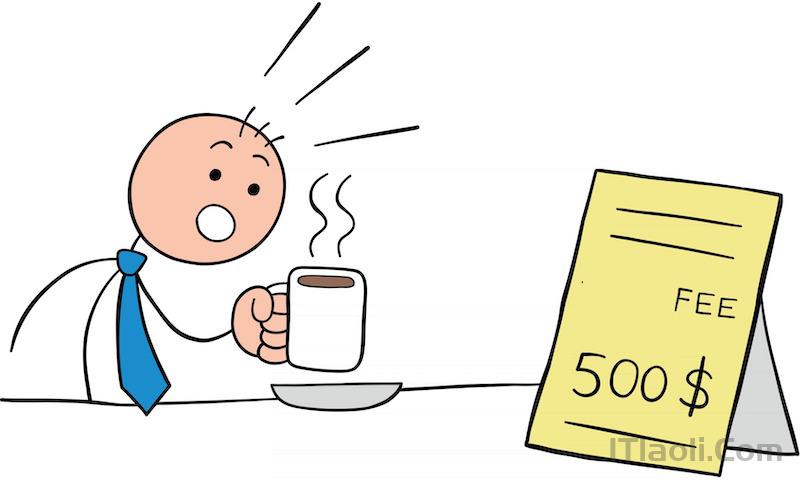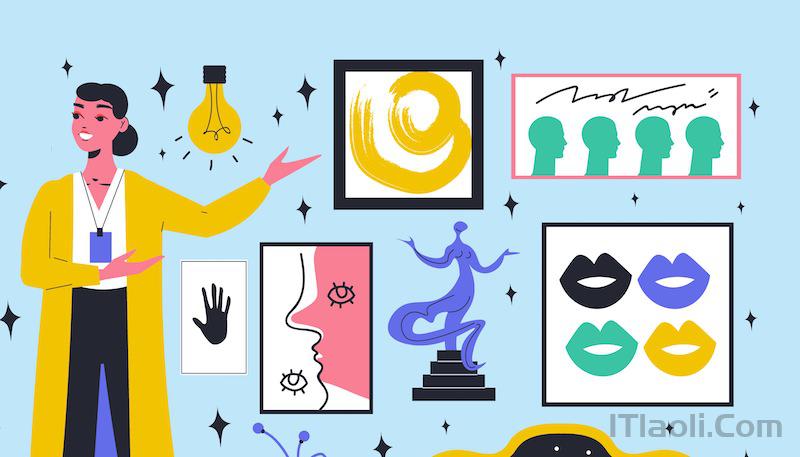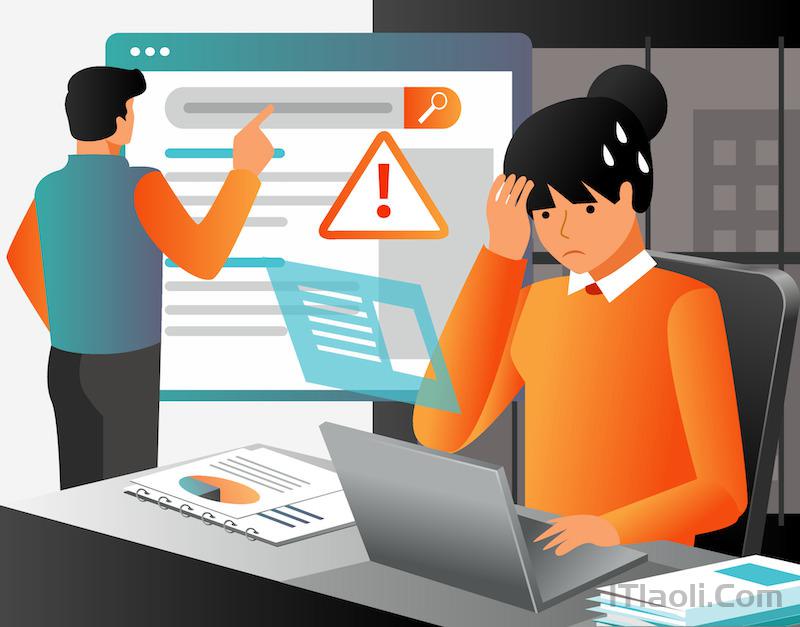Not all humans come from Earth. That’s what I think when I get a client’s response that is so mind-boggling that I don’t even know how to react to it. They must have been sent from the bowels of hell to punish me!
If you consider yourself an experienced freelancer, let’s see if you have the (sad) luck of being on the receiving end of the following ten responses freelancers don’t like hearing from clients.
If you are still a novice in the freelance arena, then take this as a revelation, a heads up for how to deal with clients like these. As for the clients, I’m not saying that all of you are like this but if you have ever used any of the following responses, know that we’re on to you.
Best Invoicing & Accounting Tools For Freelancers
Compilation of free invoicing tools and services to handle your billing systems and invoices. Some of them are... Read more
1. "I will pay you later."
You are not a full-fledged freelancer if you haven’t heard this reply twice from a single client, and twice can be considered as really lucky since, in some cases, you won’t receive any reply after the first I-will-pay-you-later.
Basically, you are screwed even if you have a contract, as all you can do is remind the client to pay repeatedly, which in most times is still totally useless unless you act like you will destroy the world tomorrow (at which point he will counter you with the word “lawyer”).

Well, that’s why the 50/50 payment plan was introduced. Instead of receiving the payment in the end, you could ask for half of the paymentupfront: 50% cost of the project.
With a 50/50 payment plan, you can cut your losses even if the client suddenly disappears off the face of the Earth. And sometimes you could even get lucky, like in one of my cases where my client disappeared right after she paid the upfront fee.
I still see professional freelancers complaining about this on their blogs, which makes one wonder how this could even happen to experienced freelancers?
You may be surprised to discover that most clients with this haunting trait are from established companies, the companies that are so professional that you thought they would never cheat you out of your honest pay. So here’s the golden rule in freelancing, never trust anyone who didn’t pay you beforehand.
2. "I will pay you once I get the money."
This reply often comes from the great dreamers who embrace the idea that they could make the coolest startup in the Milky Way galaxy, which will end up being sold to Facebook for a billion or so dollars.
They share with you the vision, and they promise you the payment, like a lump sum or a percentage of the payout but only payable when they earn money from the startup.
Never accept this kind of deal, because it has fundamentally no difference from the Nigerian Prince scam. I have seen so many freelancers accept this deal on both the Internet and the physical world, but so far, I haven’t heard any success stories from them.
Don’t even give them the chance to say that they are different than the others, that their startup ideas will work. Your focus is to perfect your craft and earn your bread with that
3. "You’re more expensive than my employee."
There were so many times when I wanted to just yell back, "Ask your employee to do the job, then", but I didn’t, as I want to keep a reputation. Instead, I had to do the grown-up thing and remind the client why a freelancer’s pro-rata fee is usually higher than a common employee’s salary.

Image source: Vecteezy
You see, freelancers usually just work for the service or product. They don’t get employee benefits or sick days off. They don’t even have basic insurance protection. It’s all milestones, deadlines, and customer satisfaction for them.
In return, they give you high-quality work, a level of professionalism that doesn’t require you to look over your shoulder every half hour, and a mutual understanding that I’ll give you what you want if you pay me my worth.
It is always good to check the market price for the level of service you are looking for. Once you are fine with the rates, dive in with your requirements. If not, continue scouting. Don’t skim on the payment: you get what you pay for, as I will further explain below.
4. "…but other freelancers offer a cheaper price."
This is another reason for freelancers and clients to iron out the pricing rates at the beginning of the project than halfway through or near the end of it. No, don’t show us the freelance job sites or design contest sites to prove that we are nothing but cheap labor in your eyes, then push us to prove you right.
Some clients may try the discount strategy, for the "how about I give you some free exposure strategy (see below)". Don’t be a pushover, you have to be confident with your skill and your proposed rates, and stick to them.
As for the clients, here’s a tip: if you want a cheap freelancer, you have to deal with their cheap ethics as well. There will be other ways that freelancers will get back what they think you owe them.
Don’t be surprised to see your designs splattered somewhere else first, usually ‘somewhere’ that is willing to pay the freelancer what you wouldn’t in the first place.
Part of the freelancer’s payment is to ensure that they keep your results exclusive to you. It’s far from a threat… more like insurance to ensure that everyone acts like adults and stops making the other feel unappreciated.
5. "You, will, get lots of exposure!"
“And in exchange, you will work for free for our company.” What kind of deal is this? Do you say that to your employees too? No. They are there because they work to take your money.

It’s the same with freelancers and despite the fact that, yes, networking is a lot more important to us than it is to your employers, exposure doesn’t guarantee us much. Full payments, though, do.
In any case, your future clients won’t pay much attention to how exposed your craft is, what they care most about is your portfolio. In conclusion, exposure isn’t useless, but it’s less useful.
Unless you are doing charity work for a non-profit foundation that would have much to gain from the added exposure, getting free exposure in place of payment is just not worth it.
6. "We didn’t receive your invoice."
“There must be something wrong with Gmail; we didn’t receive your invoice, so we will make the check by next month’s payday.” This kind of reply normally comes with 2 elements: reasons of delay and delay with reasons.
Basically, you have been checkmated and there’s no use to argue with them, since they will shift all responsibilities to the email service, even if you didn’t get any delivery failure notice.
So what’s your next best step? Send the invoice again, and confirm with them that they have actually received it. Make sure that they have no reason to blame the email service a second time, and make sure that they pay on the next due date since this kind of client has the tendency to reuse the same excuse.
Giving them the benefit of the doubt, sometimes technical errors like this will occur but if it happens often enough for you to take notice, don’t accept any future work offers from them, especially if your gut tells you that they will pull the same stunt again.
7. "I think the red should be bluer."
It’s the same with the reply, “I want it round but it should look like a square too.” If karma theory does exist in this world, you must have done really bad things in your earlier life, or else you won’t get this kind of client. Nah, I’m just kidding, because this kind of client is everywhere.
A designer’s worst fear is a client who doesn’t know what he wantsexactly. Or as the design process is going on, the client loses his own direction on what he really seeks.
In this case, you will have to figure it out for him. The best method would be to ask questions or provide him with some visual samples to narrow down his decision. If the time allows, it’s also good to reply to the client after a day or two, as it gives time for both of you to really think about the direction of the project.
8. "I think it should be more flashy."
“Can’t you understand me? Make this website design more pop, more flashy, and more Apple.” Wow.
When you get that kind of question, don’t try to ‘understand’ it because chances are, you never will ‘get it’. Ask him directly to explain what he actually means but not in words (since we’re not gaining any ground there in the first place).

Image source: Vecteezy
Ask him to show you examples of pictures on the Web that to him is a definition of pop, or flashy, or Apple-istic. If he resorts to using his feelings to define the design, then you are in a gridlock. At best, he will stumble upon a design sample worthy of his feelings. At worst, tell him you don’t do designs based on a person’s feelings.
9. "Let’s start all over again."
Without extra charge, of course. This happened when you didn’t set a clear revision rate for your client from the start, but even if you did, the client might drop you with the question, “It’s not the stuff I want; why should I even pay for a new design?”
Look, I understand where the client is coming from, having been in the same situation before, but you should insist on charging for the redesign, because “to start all over again” means “do a totally new design”. Don’t let the client’s words fool you.
It’s completely ethical to charge for a redesign since, like most employees, you’re billed for work hours but not finished product. Oh, and believe me, there’s a chance that after a month of redesigns, the client ends up loving your previous design, and he decides not to pay for the redesign since he is not using it. Insist on revision rates.
10. "Just do whatever you want!"
Normally this kind of reply comes with another sentence, “I trust you!” But you should never believe it because the reply literally means, “I don’t know what I really want, so I’ll just let you figure it out yourself.”
I know it well, because I have experienced this situation, both from the freelancer’s and the client’s side, and they both reach the same result in the end, with the client replying, “Uh, this is not what I want. Let’s add this and that, remove these and those, and oh… let’s start over again.”
It’s really important to determine the client’s needs from the start. If he’s just trying to test drive your creativity, confirm this with him, and go crazy with it. If he already has something in mind, you can probably sense it in his replies. Invite him to talk about the core idea and the specific area that you can go full creativity in, so both of you can get what you want in the end.
Reflection
All in all, even with the responses above, the freelancing gig is still tons of fun. After all, a freelancer doesn’t have to deal with office politics or deal with the manager’s bad mood swings.
As a freelancer, I can even fire a client with a probable reason (see insane and/or evil), which makes the whole thing worth pursuing. If you have ever had a reply that convinces you that your client is sent from hell, let us know about it and I will understand if you want to change your nickname before you post it.

